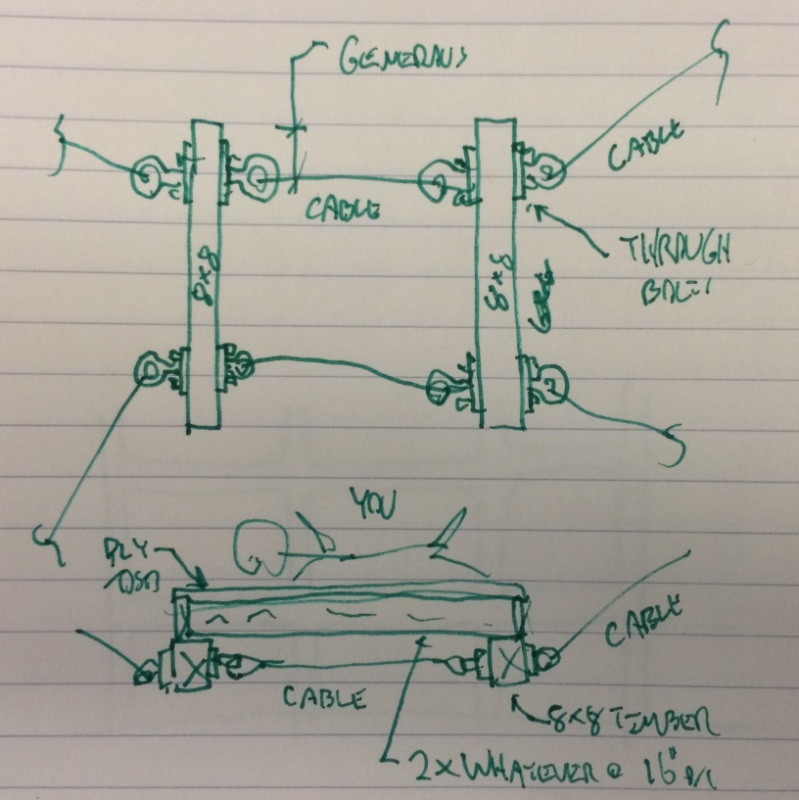treeclimberr
Structural
- Apr 30, 2016
- 8
I am planning on building a tent platform that will hang from four trees. My plan is a 10'x10' platform constructed with 2x8s with 15" center to center joist spacing. Flooring will be the lightest plywood I can find. Will this platform be structurally sound if hung by all four corners, especially if the strain is not 100% vertical, but more along the lines of 45 deg.? All the platform will hold is a mattress and myself with a simple A-frame covered in shrink which I don't anticipate will add to the weight significantly. I'm planning on using four 1-ton come-alongs in each corner with 3/16 galvanized cable.
My fear is that the horizontal component of the wire strain will prove problematic, but I may be mistaken. Any specific building additions/precautions I need to include?
Any advice would be greatly appreciated.
My fear is that the horizontal component of the wire strain will prove problematic, but I may be mistaken. Any specific building additions/precautions I need to include?
Any advice would be greatly appreciated.

